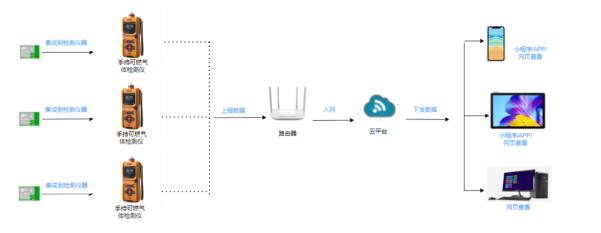






Release time:2025-11-12 Browsed0 order
At present, combustible gas detectors basically have two data transmission methods: wired data transmission and wireless data
transmission. If wired transmission is used, the technology is simple, mature and easy to implement; however, the workload of
construction and wiring is large, the network cable is vulnerable to man-made damage, and after the line is damaged, the fault
point is not easy to find.
If a wireless transmission system is used, the construction is very simple, the system is easy to maintain, and faults are easy to find.
Therefore, wireless transmission will be applied in many fields and will also be the mainstream direction of development in the future.
Gas controller:
Integrate the Wi-Fi module into the controller, which is used to parse the data detected by the combustible gas detector.
Real-time display of the received combustible gas concentration, alarm data, historical data, etc.
Data can be transmitted to the cloud monitoring platform through the WIFI module.
Control center (cloud server):
Software such as applets/apps/webpages can receive data from the gas controller through Wi-Fi and display it on the monitoring
platform in real time.
Software such as applets/apps/webpages can obtain data from multiple wireless combustible gas concentration detectors, and the
specific number depends on the performance and configuration of the Wi-Fi network.
Network configuration:
In the indoor Wi-Fi network, ensure unimpeded communication between the gas controller and the control center.
A wireless router or Wi-Fi access point can be used to expand the coverage of the Wi-Fi network to ensure that all areas that need
to be monitored can be covered.
Configure network security measures, such as encrypted transmission and access control, to ensure the security and reliability of
data transmission.
